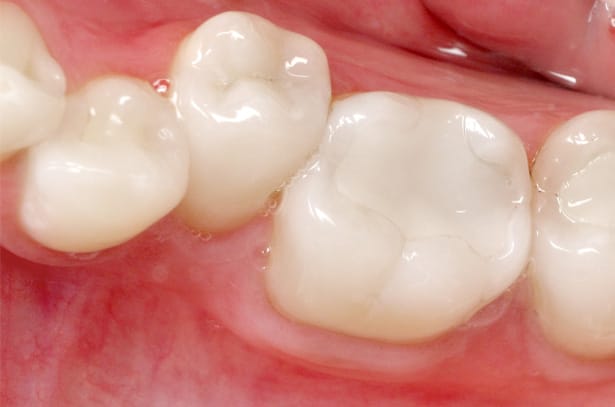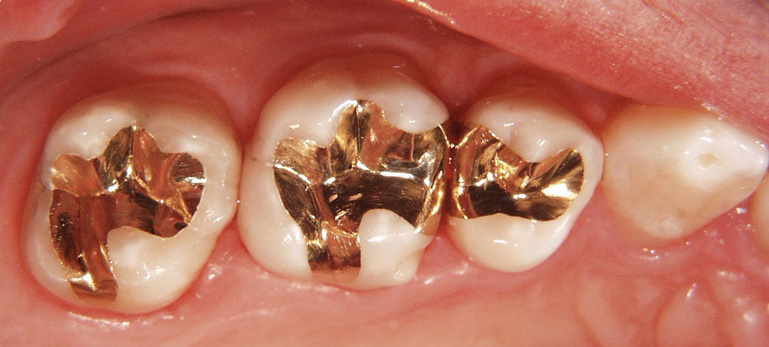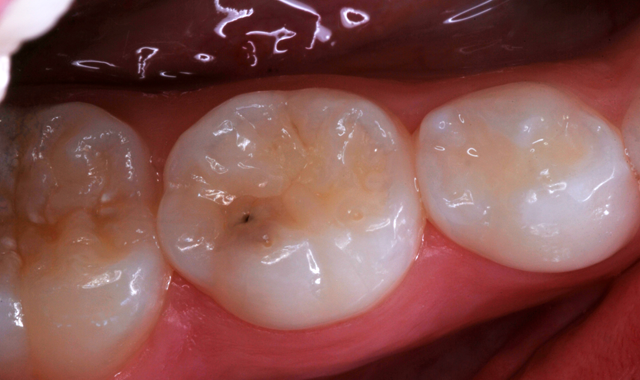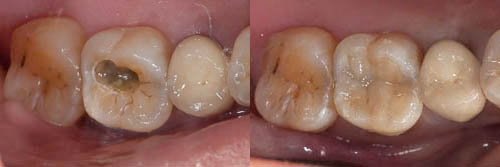Types of Dental Fillings
Jun 19, 2023

How Many Different Types of Fillings Are There?
There are many different kinds of fillings available in a variety of materials. The material can affect the price and durability of the filling. Different filling materials also vary in appearance, with some appearing more tooth-colored while others are very visible and stand out.
Composite Resin Fillings
Material
Composite fillings are made of resin and hard plastic.
Cost
Composite resin fillings generally cost between $135 – $240 per tooth. The price varies depending on where the tooth is located, how much of the tooth needs to be filled, and how many sides of the tooth are experiencing decay.
Durability
Composite resin fillings may not last as long as some other types of fillings and usually will need to be replaced about every five years.
Pros
Composite resin fillings are more supportive of the tooth, bonding to the tooth and supporting it. This prevents chipping and other damage to the tooth. In addition, composite resin fillings actually look like teeth. They’re tooth-colored and are less noticeable than other types of fillings. Composite resin fillings can also be done in only a few minutes, reducing the time spent in the dentist’s chair.
Cons
Composite resin fillings need to be done exactly right. The composite resin is made up of chemicals that can be harmful if they haven’t set correctly. Improperly set fillings don’t last as long as they should and there is the possibility of tooth sensitivity after getting the filling.
Silver Amalgam Fillings
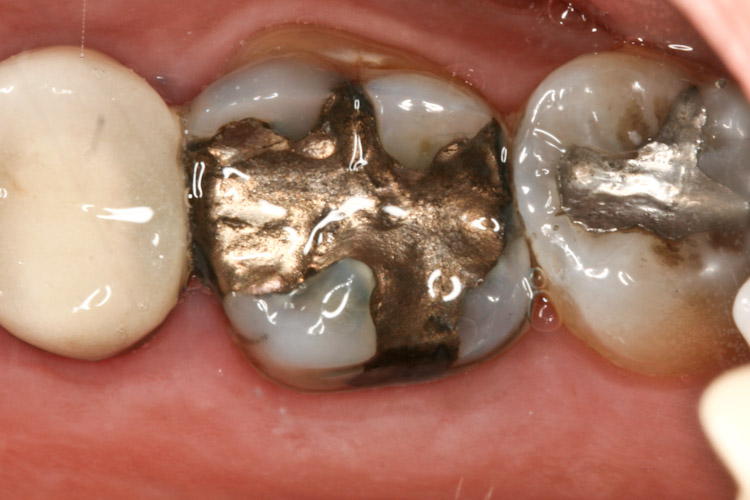
Material
Silver amalgam fillings are actually made up of many different materials and are called silver because of their color. They’re 50% mercury and 50% a mixture of silver, copper, zinc, and tin. Despite the high levels of mercury, studies by both the FDA and the American Dental Academy have shown that the fillings are safe.
Cost
Silver amalgam fillings are the least expensive of all the filling types. They generally cost between $50 and $150, depending on the tooth location and how much of filling is required.
Durability
Silver amalgam fillings are extremely durable. They can last for up to fifteen years before needing to be replaced.
Pros
Amalgam fillings are easy for dentists to put in and aren’t as sensitive to the dentist’s technique as the composite resin fillings are. There also aren’t any issues that could be caused by blood or saliva getting into the filling.
Cons
Many don’t like silver amalgam fillings because of their color. They’re very visible and easy to spot. Additionally, this type of filling can expand or contract in the mouth over time, which can fracture the tooth or create spaces between the tooth and the filling. New cavities can form in these fractures and spaces.
Ceramic Fillings
Material
Ceramic fillings are made of porcelain. The filling is meant to blend in with the color of the patient’s teeth and so is mixed for each patient to match the color of his or her teeth.
Cost
Prices for ceramic fillings begin at $250 per tooth and can rise into the thousands depending on the amount needed to properly fill the tooth.
Durability
Ceramic fillings tend to be more durable than composite fillings and can last up to 20 years. This also translates into fewer dental visits because the filling requires less maintenance.
Pros
In addition to being tooth-colored, ceramic fillings tend to be more resistant to stains and abrasions. There’s also a lower risk of an allergic reaction to the materials in the filling, as the ceramic fillings don’t have the metals or chemicals of amalgam or composite fillings.
Cons
Depending on the exact type of porcelain used to make the filling, ceramic fillings can be weaker than other types of fillings. Often the weakness corresponds to how nice the filling looks. Ceramic fillings also take up more space in the mouth and may need the area of the tooth to be enlarged to handle the extra size.
Gold Fillings
Material
Gold fillings are made up of an alloy that includes gold, copper, and some other metals.
Cost
Gold fillings are among the most expensive of the fillings. The cost ranges from $250 into the thousands of dollars, depending on the amount of work needed.
Durability
Gold fillings are incredibly durable and can last for up to fifteen or twenty years.
Pros
Gold fillings are very strong and long-lasting. The gold doesn’t corrode and they also feel more like regular teeth.
Cons
Gold fillings are expensive and aren’t commonly offered by dentists. Depending on the size of the filling, it may take more than one visit to the dentist to properly fit the filling.
Glass Ionomer Fillings
Material
Glass ionomer fillings are made of glass and acrylic. This type of filling is usually used for fillings that are below the gum line or in baby teeth.
Cost
Glass ionomer fillings are usually used for filling children’s cavities and so may cost less than other types of fillings. They may range from $50 to $90 but may vary depending on the size and location of the filling. For adults, the cost of glass ionomer fillings is comparable to composite resin fillings at $135 – $240.
Durability
Glass ionomer fillings are much less durable than other types of fillings and are much more likely to wear out or to crack. For this reason, they’re usually only applied to baby teeth in children or to locations that aren’t affected by biting. Glass ionomer fillings generally last for less than five years.
Pros
Glass ionomer fillings release fluoride, which can help prevent more cavities. This type of filling also doesn’t require much preparation because the filling can bond directly with the tooth in a chemical link.
Cons
This is the weakest type of filling. It’s more prone to wearing out or cracking and lasts less than five years, limiting its use to non-biting surfaces and baby teeth in children. While its color isn’t as obvious as a metal filling, it doesn’t quite match the color of the rest of the teeth.
Temporary Fillings
Material
Temporary fillings are usually made out of a soft material that is just meant to act as a placeholder until the permanent filling is applied. Materials used may vary.
Cost
Temporary fillings do carry their own cost, which varies depending on the dentist and the material. Eagle Harbor Dentist tries to avoid using them whenever possible, preferring to treat the tooth with a final restoration right away. This puts the cost of a temporary filling towards the price of the permanent filling instead.
Durability
Temporary fillings aren’t meant to last and therefore will usually crack or wear out after about a month.
Uses
Patients usually only get temporary fillings in any of the following situations:
What Type of Filling do Dentists Recommend?
Eagle Harbor Dentist recommends the composite resin filling. The bond this filling creates with the tooth can seal out bacteria that would cause further cavities. The newer and better materials of more modern resins mean that the fillings are more durable and can survive the harder wear and tear of being placed on the back teeth. In addition, many patients prefer composite resin fillings because they match the color of their teeth.
For dentists, the most important factors are that the fillings seal the tooth from further decay and that they are structurally sound. Composite resin fillings also reduce sensitivity after placement, as they can insulate the tooth better from cold. While the cost of a composite resin filling may be slightly more than other filling materials, it’s worth the expense over the amalgam fillings.
How Do I Know if I Need a Filling?
A dentist will be able to tell you if you need a filling, but there are also some warning signs that you can keep an eye out for:
Does Getting a Filling Hurt More With Different Materials?
The type of material used for the filling doesn’t affect how much it may hurt to be applied because dentists will use an anesthetic during the procedure. Some people may experience soreness after the procedure and metal fillings such as silver amalgam or gold may insulate less well against cold and so patients with these may feel more sensitivity in these teeth.
It is possible to cause a galvanic shock if you have two fillings made from contrasting materials, such as gold and silver amalgam, on teeth that will touch. To avoid shocking yourself through your fillings, make sure all of your fillings are of the same material.
Are Metal Fillings Stronger?
Silver amalgam and gold fillings do last longer and are more durable than many of the non-metal fillings. Ceramic fillings are long-lasting but may be more susceptible to wear and tear.
Are All Types of Fillings Safe?
The silver amalgam filling’s safety is often questioned because of its high mercury content. However, mercury is safe and stable when combined with other metals and both the FDA and the American Dental Academy have performed studies that have not found any safety concerns.
What Kinds of Problems Require Fillings?
Fillings are most commonly used to treat cavities and to prevent additional dental issues in the future, but can also treat fractures or cracks in the teeth as well. Fillings are meant to repair any hole or crack in the teeth, whether it was caused by tooth decay or by physical trauma.
What Happens if I Don’t Get a Filling?
If you have a cavity or fracture and don’t get it treated with a filling, bacteria can get into the hole. This can cause further tooth decay, making the problem much worse, often requiring a full dental crown to repair instead of just a filling.
What’s the Process for Getting a Filling?
The dentist first removes the decayed part of the tooth. Then, the tooth is cleaned and a filling material is put in to seal the tooth and return it to its original shape and function.
Does Getting a Filling Hurt?
Dentists use an anesthetic to prevent pain during the filling procedure. There may be some soreness afterward and you may be prescribed a painkiller. In general, the pain of the problem that necessitated the filling is worse than the pain of getting the filling.
How Can I Care for My Filling?
Because some people may experience soreness and sensitivity in the first few days after getting a filling, it’s recommended to avoid extremely hot or cold temperatures. It’s also good to avoid very sticky or tough foods until the filling has completely set, which is usually 24 – 48 hours depending on the type of material.
Continue good oral hygiene by brushing your teeth and flossing after every meal and making regular visits to the dentist for cleanings. Watching what you eat and avoiding sugary and acidic foods can also improve the longevity of your filling. Flouride toothpaste and mouthwash can help protect from any new cavities while avoiding grinding your teeth can prevent wear and tear on your fillings.
What Happens if the Filling Is Damaged?
Fillings can get damaged if they come into contact with something hard, whether it’s something you bit into or an external force, such as contact during sports. If you notice a crack or other damage to your filling, see a dentist as soon as possible so that they can replace or repair the filling. This will help you avoid infection and further tooth decay.
How Do Fillings Fix Cavities?
The cavity is fixed by the dentist removing the decayed part of the tooth. Fillings restore the structure and function of the tooth by filling the hole and sealing it to prevent bacteria from getting inside and causing more damage.
Can a Filling Get Infected?
A filling can get infected if they crack or are otherwise damaged or worn. To prevent infection, it’s important to maintain good oral hygiene and to see a dentist if the filling needs to be replaced.
Do You Need a Filling?
Call to schedule your appointment!
(904) 269-6558
or
Fill Form To Schedule Your Appointment
For informational purposes only.


